Hello!
You’ve received this email because you’ve signed up for noodsletter. Thank you.
If any of you want to send over things you find interesting, or that you think I would find interesting, I encourage you to do so! (Thank you to all who do!)
Today, we’re cookin’ some fish.
All the recipes ever published in noodsletter have been archived in the very first noodsletter, which you can find here.
Please consider becoming a paid subscriber!
Book Bit
I pictured the way Dad would use that hand to wring my rabbit’s neck, like the childproof top of a canister of nitrogen: there was only one right way to do it. I imagined Mum laying out my lifeless pet on a silver dish she used for Russian salad on Sundays after church. She’d display him on a bed of lamb’s lettuce and garnish him with gherkins, tomato chunks, grated carrot, and a sprig of thyme. I looked at my hands, at their irregular lines. They were still too small to be used for anything other than holding stuff. They still fitted in my parents’ hands but Mum’s and Dad’s didn’t fit in mine. That was the difference between them and me - they could put theirs around a rabbit’s neck, or around a cheese that had just been flipped in its brine. Their hands were always searching for something and if you were no longer able to hold an animal or a person tenderly, it was better to let go and turn your attention to other useful things instead.
From The Discomfort of Evening by Marieke Lucas Rijneveld, translated by Michele Hutchison.
Whose hands? Dad’s, Mum’s, my hands and their irregular lines, my parents’, Mum’s, Dad’s, mine, theirs, yours (which aren’t capable of holding things tenderly any longer).
Thanksgiving + Black Friday - 50% off Studio Pass Deal
Like every other recipe outlet, we’ve been busy as bees putting together our Thanksgiving spread for weeks and weeks, and while I’m biased, I think we did a fantastic job this year. Check it out, if you’re curious or if you’ve got a non-Thanksgiving Thanksgiving dinner still on the books. I was a little too busy to send this noodsletter out before the big day. However! The turkey nuggets and turkey floss (both by the incomparable Tim Chin) are great non-Turkey Day projects, especially since turkey thighs and other parts are on sale right now.
(Not ChefSteps related, but I have to plug my leftover turkey ramen from my SE days.)
Our Thanksgiving plans got canceled at the last minute this year, so my wee family just did a small dinner at home. I had prepped the turkey breast in advance, and I’d made our turkey bouillon cubes, too (which I used in our instant gravy), so it ended up being an easier dinner to prepare than my everyday meals. It was my first time trying the ChefSteps sous vide turkey breast, which I have to admit I was skeptical of: 131 degrees Fahrenheit for 24 hours? What is this, a short rib?
Well, it was good. I want to say it was good in a weird way, but the weirdness that it was dang near perfect. I should have known, of course, the CS crew know their sous vide, and a turkey breast is apparently closer to a tough cut of red meat than a chicken breast when it comes to cooking.
Along with some roasted Brussels in a fish sauce vinaigrette, mashed potatoes, StoveTop stuffing, canned cranberry gloop, and our annual pumpkin pie (a mix of Stella Parks’s flaky pie dough—which I make—and the pumpkin custard from the recipe on the canned pumpkin—which is my wife’s “specialty”) with brown sugar whipped cream, it was a great Thanksgiving meal. (Which is to say, it was perfectly fine.)
I hope your Thanksgiving was perfectly fine, too!
For Black Friday, we’ve got a 50% sale on Studio Pass memberships for new subscribers—it’s like $35 for a full year! I honestly think the Studio Pass deal is a steal. People like bulleted lists, so here is my bulleted list elevator pitch:
We produce better and more interesting recipes than anyone out there, and our stuff is unique. The stuff I made for Thanksgiving is representative. (If there’s another site that’s putting out recipes like these, please let me know, as I would like to subscribe to it!)
We have a lot of detailed step videos, particularly for more complicated recipes/techniques (like pastry).
The scaling tool. Sort of hard to describe why this is so cool to me, but I use it all the time. It doesn’t just scale up by whole integers; you can input the mass of any given ingredient and the recipe will scale accordingly. I honestly find it annoying to use recipes on other websites because they don’t have this functionality.
There aren’t any ads. What I mean by that is: There are no ads! I understand that might be confusing; even Wikipedia has bottom banner popups like once a year. ChefSteps doesn’t. No ads, no banner ads, no programmatic crap, no autoplay videos. There are no ads on the site! (Aside from Breville product promotions on the homepage.) The reason why we can run literally no ads on the site? Studio Pass subscriptions.
I want to note, too, that people think of ChefSteps as a place of kooky cookery for super at-home chefs, and while that is true (I will make phyllo myself, one day, for example), it’s also just got solid, reliable, delicious recipes that you’ll make over and over again. I make our shokupan recipe 2x a week, I always have our cochinita pibil in the freezer, I think the tsukune recipe is a work of paint-by-the-numbers art for home cooks. I would not make these things if I didn’t like them; they’re just good.
If you want to take advantage of the deal, you can use the code NOODSLETTER at checkout. The offer ends 11/28/2023. (If you go to ChefSteps.com, there’s another code you can use to get the same deal, but if you use the NOODSLETTER code, I get to cosplay as an influencer.)
In lieu of “News,” Some Stuff I’ve Been Making
Here’s the pibil linked above, taco-ified. The pickled red onions that accompany the pibil are excellent. Yeah, that’s a store-bought tortilla, shame shame.
I made an abura soba with excess pibil fat and a little pibil. Abura soba is just ramen tossed with a ton of fat and seasoning. The proportions here were, I think:
2 tablespoons hot pibil fat
2 tablespoons hot pibil
1 tablespoon shio tare
1 tablespoon soy sauce
2 teaspoons rice vinegar
Add all that to a large mixing bowl, throw in drained, cooked ramen, and mix and toss like your lunch depends on it. Slide it all into a serving bowl and top with pickled red onions and a ton of scallions.
It’s very, very good.
(The noodles were, I think, made using this formula: 85g bread flour, 14.5g tapioca starch, 0.5g egg white powder, 42 g water, 1.3 g sodium carbonate, 0.2g potassium carbonate per serving. Aged 1 day at room temp, 3 days in the fridge.).
A recipe we ran for “vegan foie gras pâté” is doing some numbers right now because we released a YouTube video about it.
I’d eaten the final versions last year, so I knew it was good; this was the first time I’d made it myself. (That is not my stovetop in the background, mine is decidedly messier, and greasier.) What is there to say about it other than that it is delicious? Highly recommend, if you want to purchase low- and high-acyl gellan and make fake foie out of cashew nuts.
This amazing number was created with the help of Start Here, Sohla El-Waylly’s new cookbook. Steamed milkbread buns stuffed with aloo masala with toasted cashews? One of the most delicious things I’ve made! Also highly recommend (the book, the recipe).
Back on the sourdough kick, this time using “good” flour from Ground Up Grains—specifically the Ancient Grain Bread Flour. Still using Tim Chin’s sourdough recipe from Serious Eats, so the hydration on this loaf was a little low (that recipe is formulated for AP with a little whole wheat, a less thirsty flour mix). However, it turned out pretty great nonetheless; this flour is very, very tasty.
Nitsuke
Nitsuke is braised fish. It falls under the umbrella of “nimono,” which basically means “simmered things” in Japanese, a category that includes dishes as various as braised greens, stews, and stuff like nabe (hot pot) and oden. The preparation is as straightforward as its name: you put [ingredient] in seasoned liquid and simmer it until it’s cooked.
For fish, that seasoned liquid is typically a mixture of ginger, soy sauce, mirin, sake, and sugar. Sometimes dashi is used as a base; sometimes other seasonings, like miso or tamari, are used.
A while back I was doing some casual testing of nitsuke for Serious Eats, and I did side by sides of dashi-based nitsuke and nitsuke made without dashi at all. My aunt, who is considered a good nitsuke cook, said to me at the time, “Don’t use dashi; the fish makes its own dashi.” After testing, I have to agree: adding dashi might “elevate” the preparation, but it doesn’t make it any better, and this was true even when using subpar fish fillets like farmed tilapia.
However, for the very best nitsuke, you want to use whole fish, especially little specimens, which also have the advantage of being easier to fit into the standard issue pots most of us have. (You can braise a hefty black seabass or snapper, but they won’t fit in a Dutch oven, say.) It’s also a preparation that’s ideal for sweet, white-fleshed fish—rockfish are the norm, not mackerel or salmon, say—but it will work for anything: sweet-salty, with a little aromatic oomph from the sake and mirin and ginger… hard to go wrong. The benefit of using a whole fish is that the skin and all the harder bits in the head dump a ton of gelatin in the braising liquid, which makes the sauce stickier and more delicious; you won’t get that with a fillet, even if it’s got it’s skin.
If you have access to a bizarre Japanese fish counter that stocks all kinds of super fresh whole fish from both American waters and Japanese waters, despite the fact that none of the clientele seem to be interested in purchasing anything but salmon and tuna, like the one at the new NYC Wegman’s, nitsuke is an excellent cooking method to have up your sleeve. I picked up this mebaru (goldeye rockfish) as a treat (it was $22.99/lb and came out to about $16) and slid it into my Dutch oven with boiled off sake, ginger, tamari, mirin, and a bit of sugar and simmered it with a drop lid for just 15 minutes, spooning the braising liquid over the fish both at the beginning and the end, let it cool, and then warmed it up for serving. The sticky skin really is the best part, but the mild, sweet flesh has plenty of virtues all on its own. And the fish gets better if you let it sit overnight in the fridge—you can, if you’re bold, eat it cold with hot white rice for breakfast. One of my favorite things to eat.
The drop lid (“otoshibuta”) functions in a similar way to a cartouche, or parchment paper lid, in French/Western braises; it promotes even cooking by trapping most of the steam emitted by the braising liquid in the immediate vicinity of the braising thing. It has a little more weight to it than a cartouche, but not much; just enough to lightly press down on whatever’s in the pot. It’s a mostly optional piece of equipment, but it’s effective, and recommended (just use a cartouche if you don’t want to buy a uni-tool for Japanese-style braising).
One last observation is about salting the fish—you should do it, even though it’s getting dunked into salty liquid to cook. For little fish, you can just salt it in and out, but the better method (and the recommended one for anything larger than a pound), is to dunk it in a concentrated salt solution for just 10 minutes. I usually eyeball it, but it’s about 5% salt? You want to “salt out” the flesh a bit—draw out excess moisture, which plumps up the flesh even as it seasons it. Just fill a bowl with the solution, dunk the fish in there so it’s completely submerged, pull it out 10 minutes later and proceed with the process/method/recipe as written. This quick brine will also make whole fish preparations of any kind way better—grilled, en papillote, steamed, salt-baked, whatever.
Mebaru Nitsuke
Ingredients
180 mL Sake
2-inch piece of ginger, peeled, sliced into coins
100 mL Tamari (or soy sauce)
100 mL Mirin
1 teaspoon Sugar
1 small whole rockfish, scaled, gutted, cleaned, and salted
Combine sake and ginger in a Dutch oven and bring to a boil over high heat. Cook until alcohol has mostly cooked off and sake has reduced by about half, 2 minutes.
Add tamari, mirin, and sugar and stir to dissolve sugar.
Add rockfish. Spoon a little of the sauce over top of the rockfish. Cook until liquid comes to a simmer, about 2 minutes. Add drop lid or cartouche, cover, and reduce heat to low. Cook until fish is fully cooked (140 degrees F on an instant-read thermometer at the thickest part)(yeah, that’s kind of high, but trust), 10 to 15 minutes. Shut off heat and let cool to room temperature, covered, about 30 minutes.
Reheat until steaming. Serve. (Or serve it at room temp. Or stash it in the fridge and rewarm it the next day, or serve it cold.)
Grilling whole wee fish
If you have access to a deranged fishy wonderland of Japanese fish, you may find yourself wondering what to do with the wee whole fish on display. The answer for home cooks is: grill them. It really is that simple, and if they’re selling them at a fancy fish market that specialized in Japanese fish, they’re guaranteed to taste good if you prepare them this way.
Two recent examples I’ve grilled are sanma (Pacific saury) (which I wrote about last time) and … you know, I don’t remember what the name of the other fish was, but it was similar to shishamo, or smelt. Both of these fish are diminutive, and they’re meant to be grilled completely whole, which means they are ungutted. While the sanma is ungutted because of its deliciously bitter belly, the not-shishamo are ungutted to preserve the ample roe they contain.
The way to grill these things is super simple: Get your grill going hot, pat the fish dry, then rub them with a thin layer of neutral oil. Salt them and throw them on the grill, and cook them until the skin is a little charred on both side, something like 3 to 5 minutes per side. You don’t have to worry about overcooking so much; you mostly want to focus on getting the skin kind of crispy and a little charred for flavor. That’s it! Drizzle them with soy sauce or tamari and eat them with rice and pickles.
Between nitsuke and salt-grilling (shioyaki), you can prepare about 50% of the fish on display at a bonkers Japanese fish counter. The other 50% will likely be bigger fish, often used for sushi and sashimi.




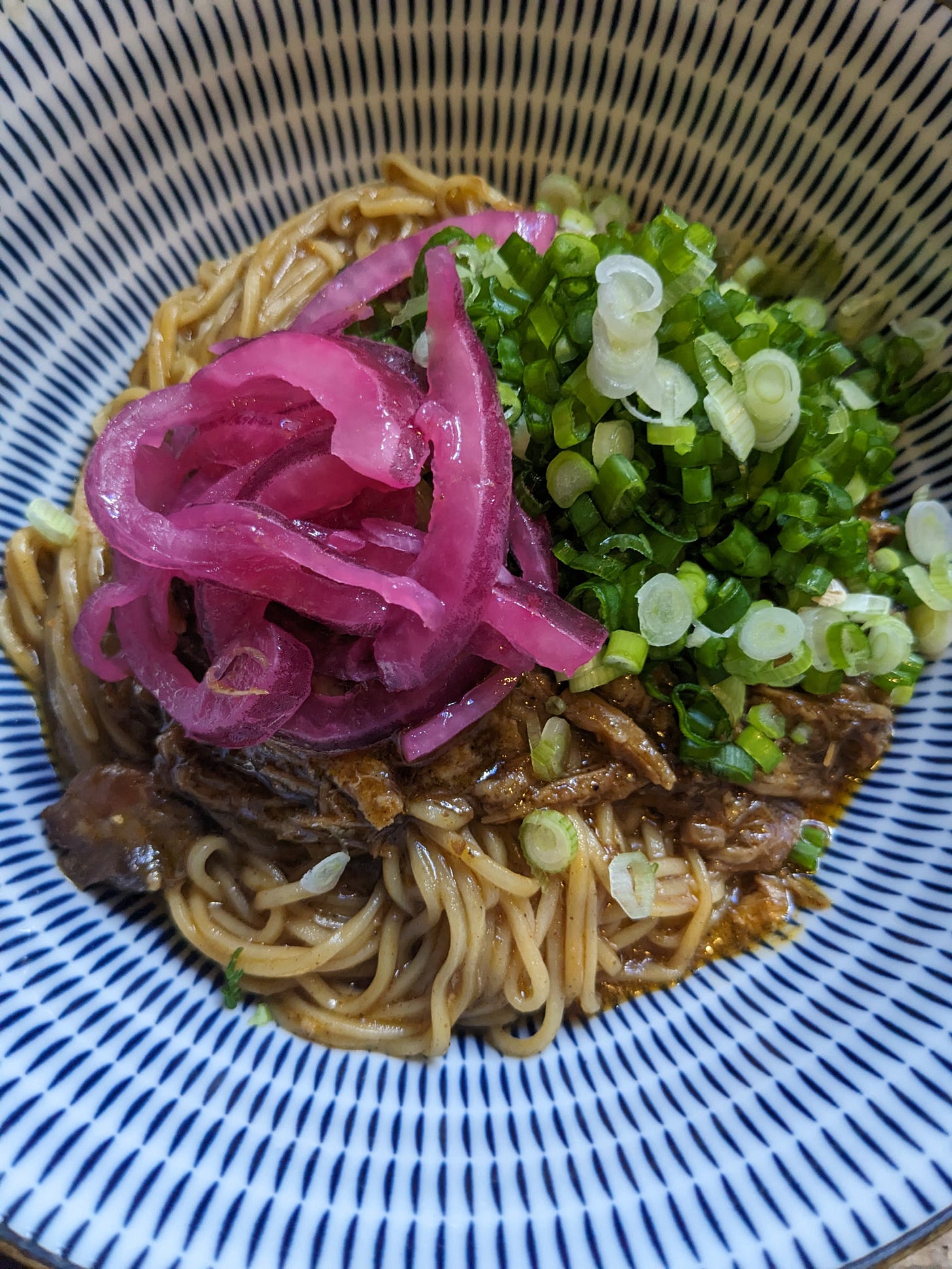

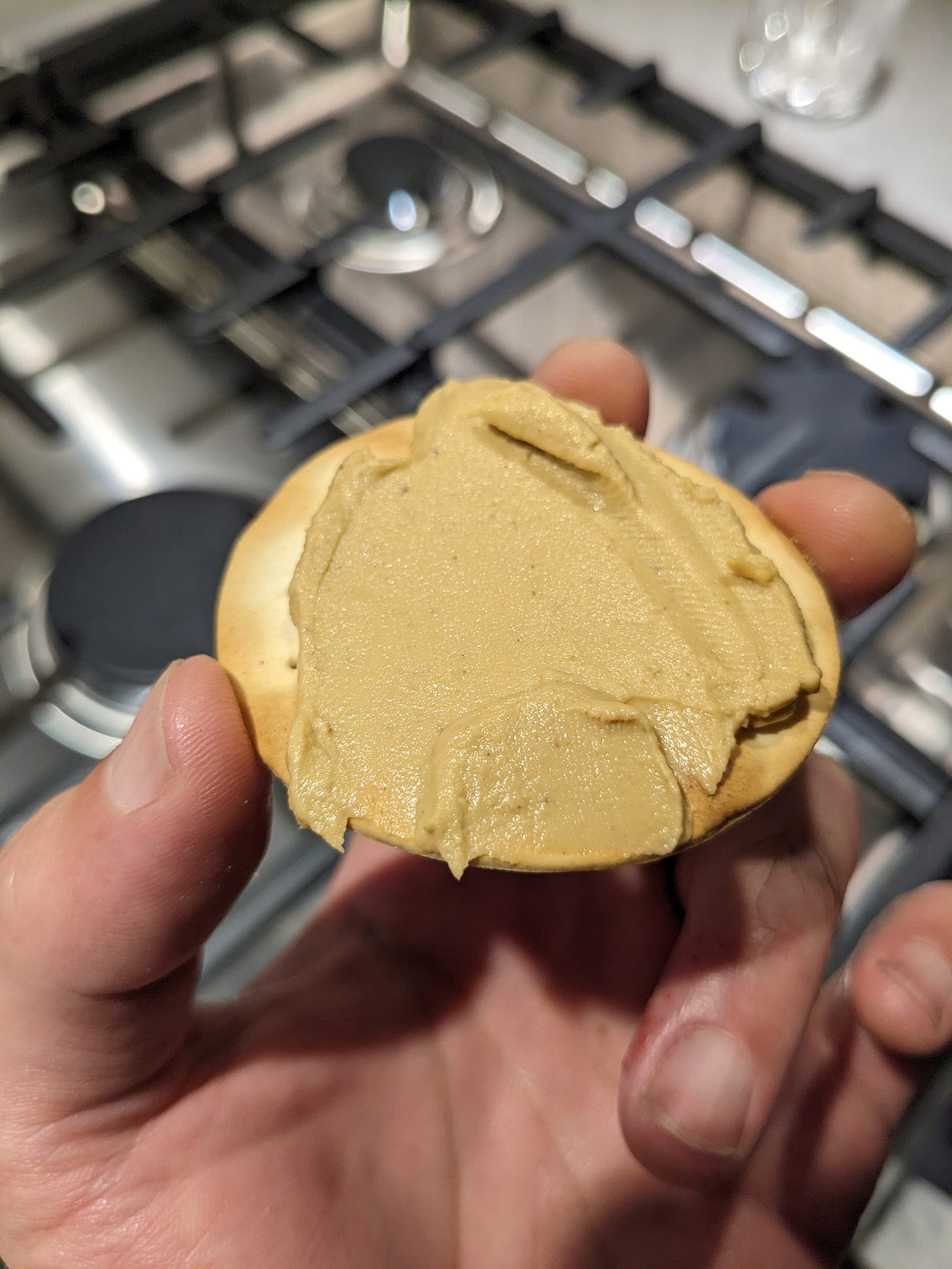
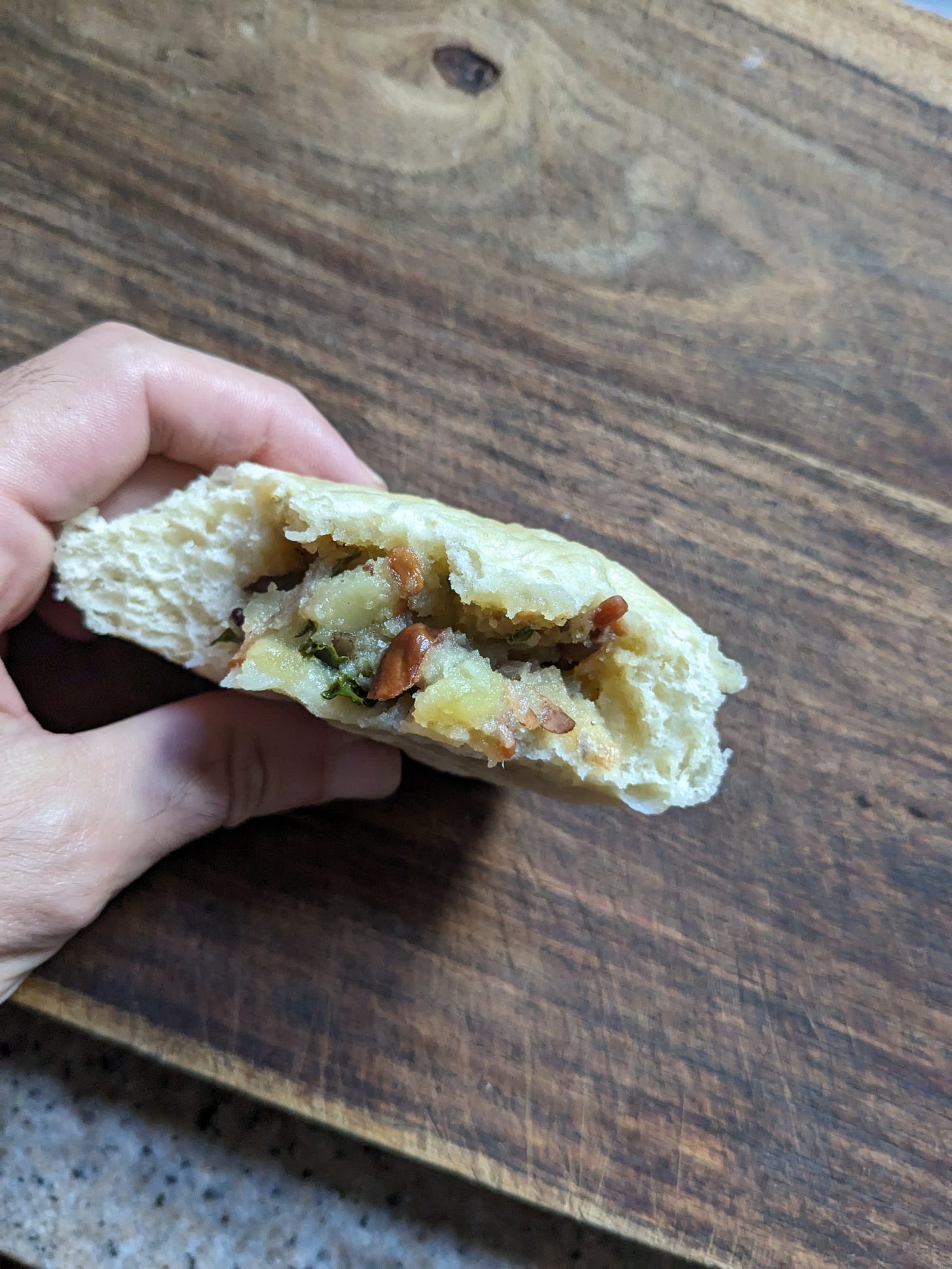
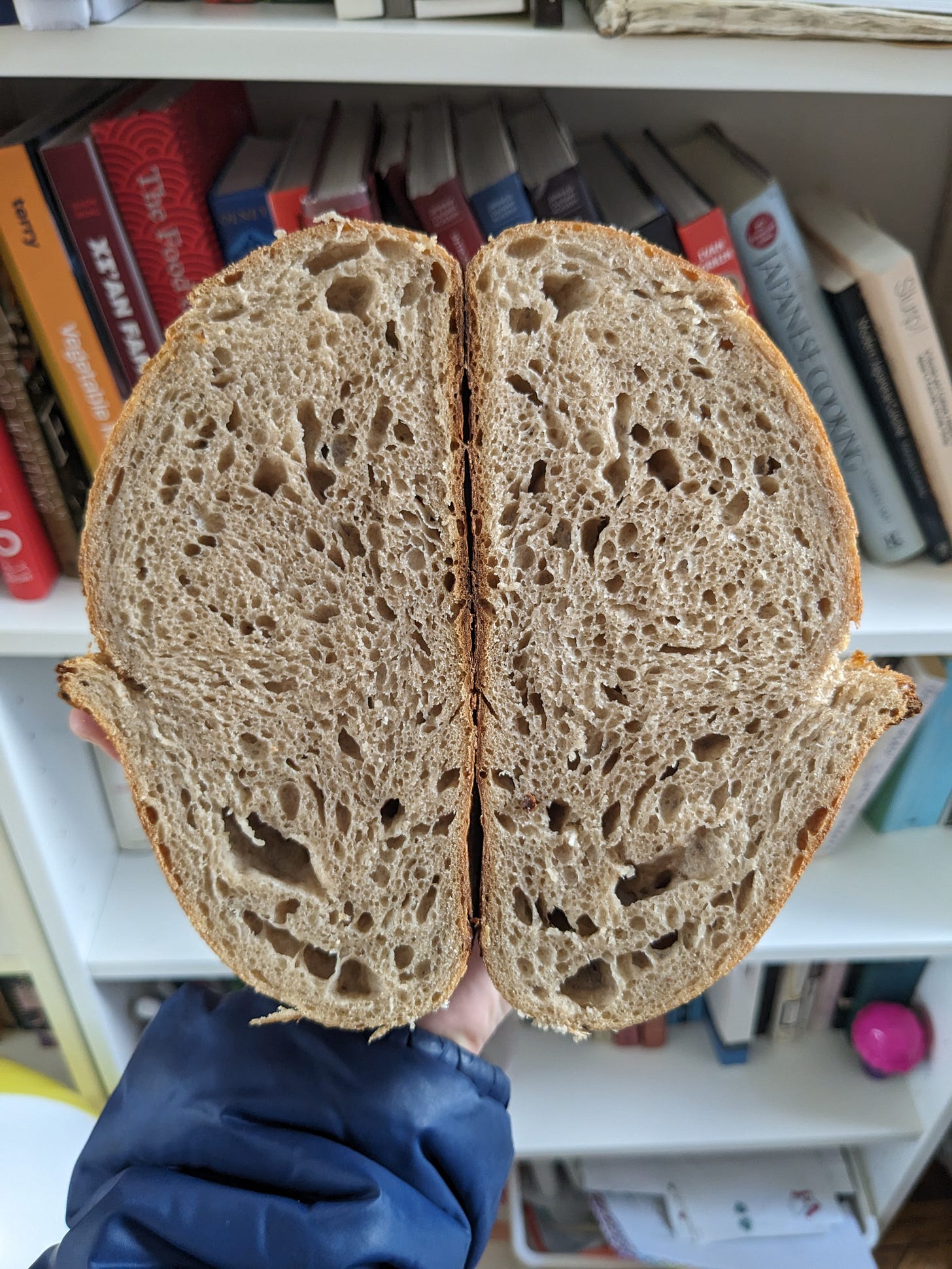

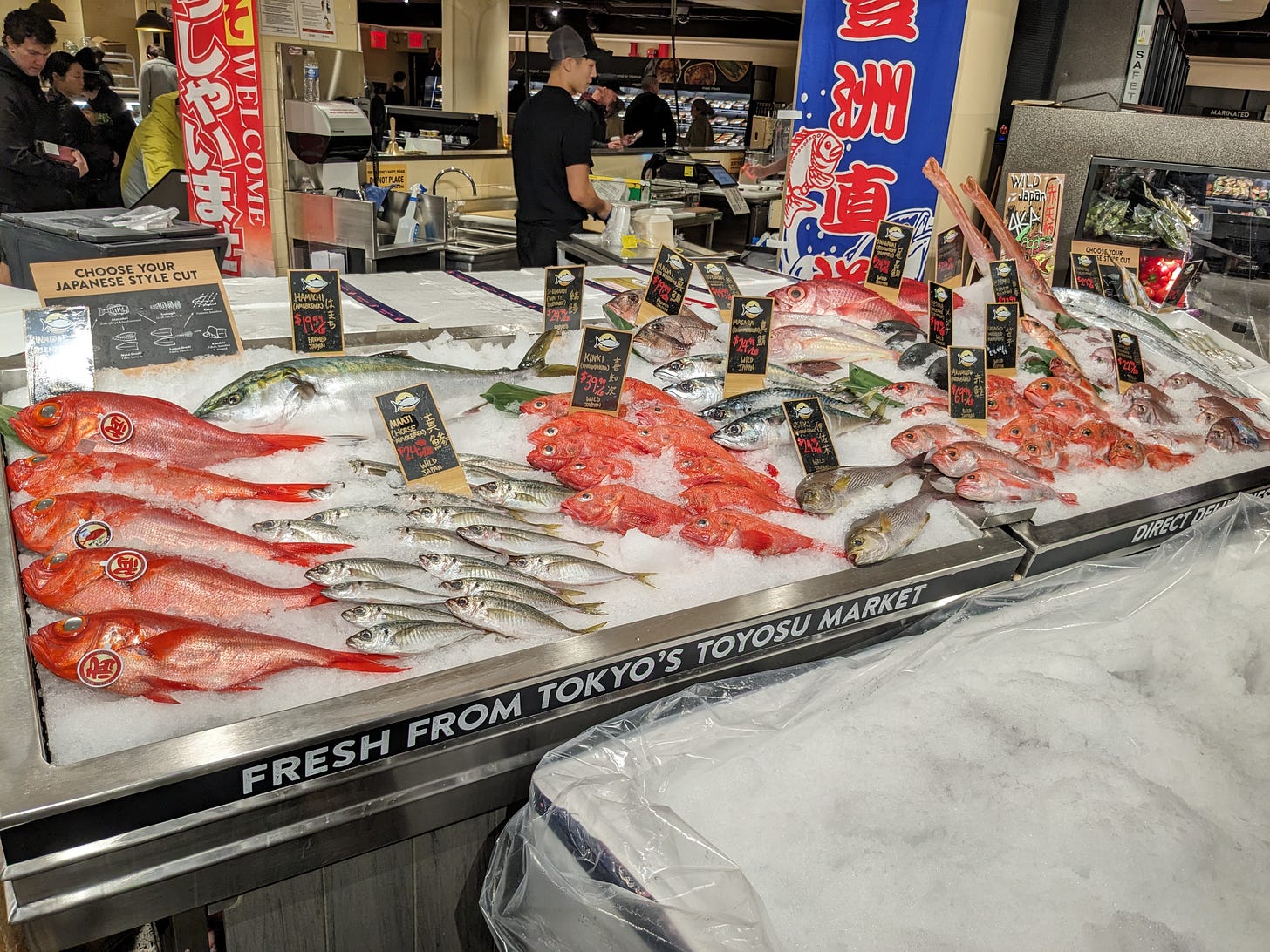


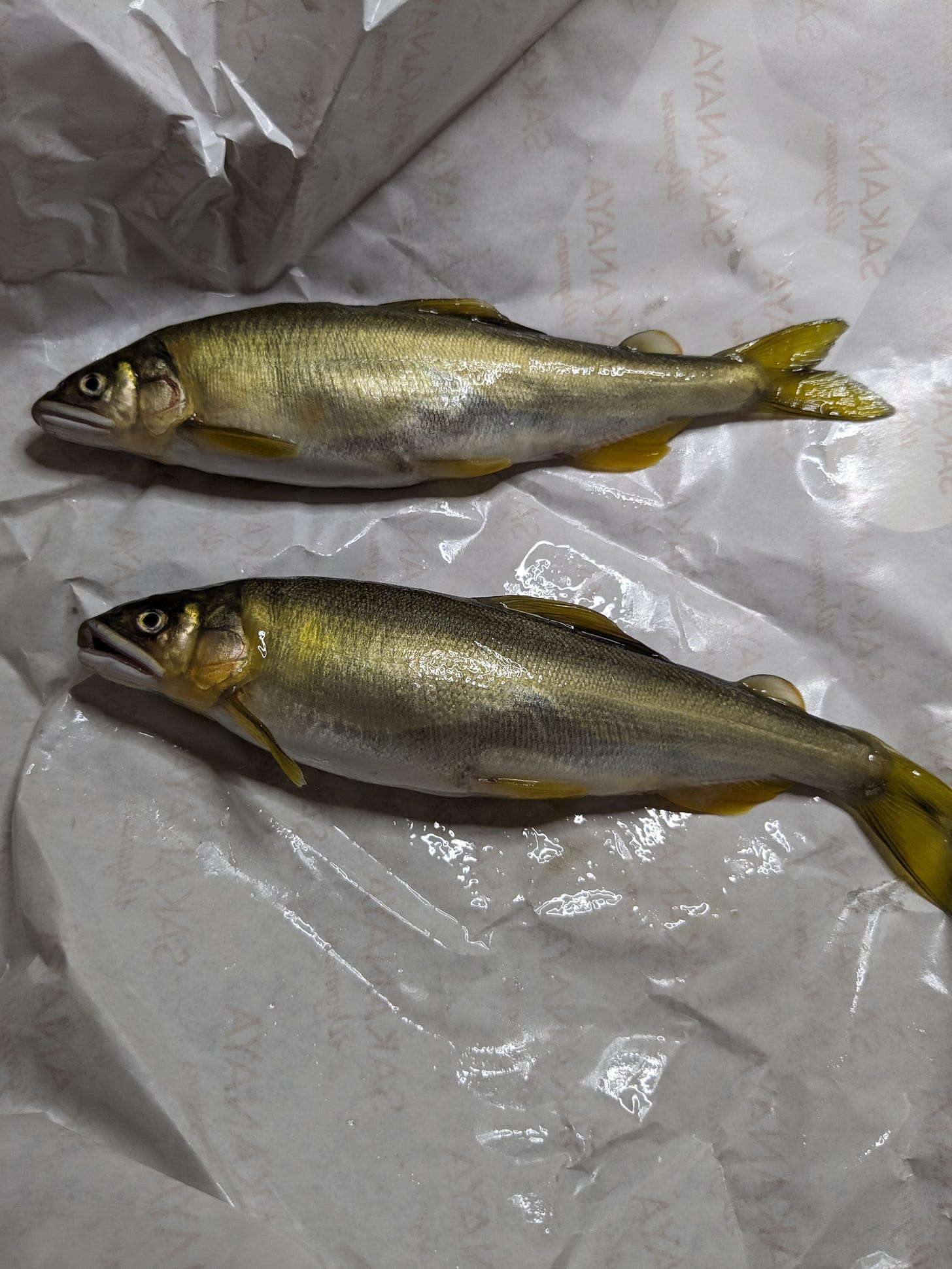
We used to have pan fried smelt from my Italian great aunt, so good! On another note the Vegan foie is something special. I used some Burlap and Barrel 5 spice out of laziness (had no vanilla and my star anise was tired) and it was fantastic.
Love this. So when you say you "grill" the sanma - what is it that you use? Thanks!